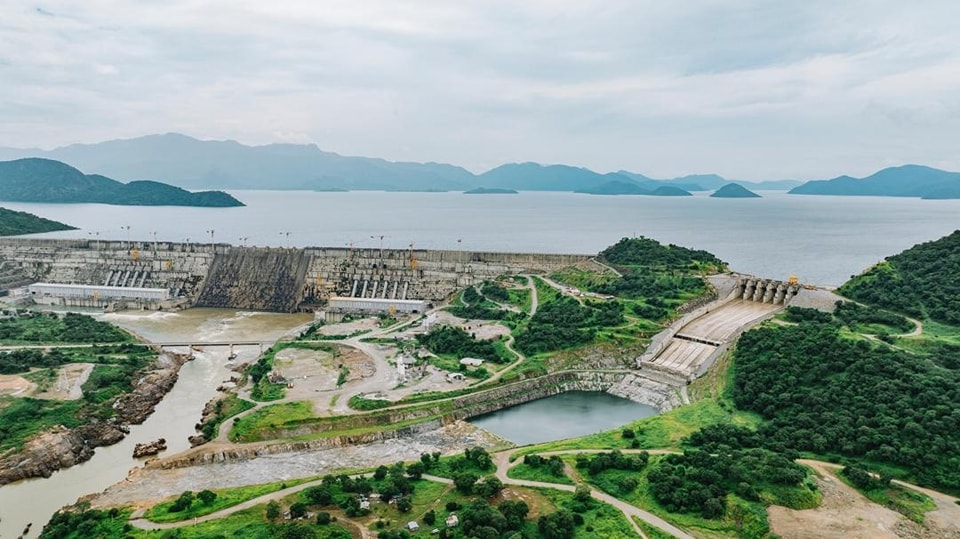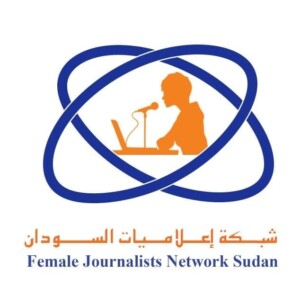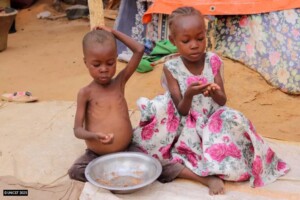Unprecedented Blue Nile depletion as Ethiopia opens GERD

The Grand Ethiopian Renaissance Dam after full filling in August 2024 (Photo: Government of Ethiopia)
Reports indicate the waters of the Blue Nile in Sudan have receded to unprecedented levels, disrupting the annual flood season between July and October, when heavy rains from the Ethiopian plateau normally send torrents downstream. Experts say this year’s water recession is caused by the filling of Ethiopia’s Grand Ethiopian Renaissance Dam (GERD), which has now been completed and is slated to be inaugurated in mid-September after withholding vast amounts of floodwater.
Ethiopia’s Minister of Water and Energy Habtamu Itefa Geleta, announced the completion of all construction and filling stages, promising a national celebration for the dam’s inauguration.
Speaking on state television, he insisted the dam is a “tool for cooperation, exchange of benefits and ending differences” rather than a source of conflict, despite the contestation it has sparked among some in Sudan, Egypt, and other Nile Basin countries.
Ethiopian Prime Minister Abiy Ahmed previously insisted that the dam had not affected Egypt’s Aswan Dam, nor caused any measurable water loss, and reaffirmed that Ethiopia’s development will not come at the expense of its neighbours.
In an interview with infrastructure and water resources expert Abubakr Mohamed Mustafa Fadlallah on Friday, he states that GERD “has a great impact on Sudan” due to it holding water during the flood season from July to October. With a storage capacity of 74 billion cubic metres, the dam regulates flows through 13 turbines to generate electricity.
“The filling process began five years ago,” Mustafa explained. “The dam has now reached 637 metres above sea level, storing 69 billion cubic metres. By mid-September, Ethiopia will hit its maximum capacity of 74 billion and officially open the dam.”
On the topic of the Blue Nile’s water level depletion, he stressed that Sudan benefits from this regulation. Instead of violent seasonal surges, flows are distributed evenly across the year, which enhance irrigation, electricity generation, and dam management inside Sudan.
Cooperation and disputes
Mustafa noted that Sudan and Ethiopia maintain technical coordination on dam management. “There are joint committees that have exchanged information for more than 20 years,” he said. Adding that, Ethiopia regularly shares data that affects Sudan’s own El Roseires Dam.
While he urged Khartoum to focus on its national interests, he underlined that Egypt remains locked in dispute with Ethiopia’s capital of Addis Ababa, accusing Ethiopia of acting unilaterally and threatening Cairo’s water security.
Benefits for Sudan
Mustafa listed clear benefits: steady water levels that improve irrigation in El Gezira, enhanced agricultural cycles, cheaper electricity, and reduced risk of destructive floods. He argued that consistent flows also enable Sudan to expand fish farming, navigation, and crop production.
“The GERD holds water that Sudan’s dams cannot,” he said, noting that El Roseires Dam stores just seven billion cubic metres and Merowe Dam 12 billion.
Environmental concerns
On environmental impacts, Mustafa downplayed fears. He said the dam reduces silt by up to 50 per cent, improving dam and irrigation efficiency, especially in El Gezira. He dismissed claims of major fertility loss, stressing that modern fertilisation already drives productivity.
“The environmental changes remain local,” he said, comparing the GERD’s effect to other Nile dams built over the past century.
Calls for a legal agreement
The water resources expert warned that the absence of a binding legal framework among Nile Basin countries remains a major obstacle. He urged Sudan to press for clear protocols to guarantee data-sharing and coordinated management.
“The GERD experience shows the need for fair regional cooperation,” he said. “Conflict will not serve anyone. Cooperation is the only way to secure sustainable development.”
Risks and warnings
Not all experts agree. Sudanese researcher Ahmed Abdualah El Sheikh cautioned that the dam could heighten risks during exceptional floods, such as in 1988. He argued that if gates are suddenly opened, downstream populations could face catastrophic flooding.
El Sheikh also stressed that Sudan’s northern deserts rely on annual floods to deposit fertile silt. “Without this renewal, fertility declines and desertification accelerates,” he wrote in a study published on Sudanile.
Radio Dabanga previously reported on the GERD’s fourth filling in 2023, and the subsequent backlash that arose from it. In an interview with Dr Ahmed El Mufti, international water expert and former member of Sudan’s GERD negotiations team, he warned that the dam’s potential dangers for Sudan are “limitless”.
El Mufti described it as a “water bomb” that could submerge Sudan if it were to collapse and cautioned that Ethiopia could wield the dam for political purposes. He highlighted that under the 2015 Declaration of Principles, Ethiopia is not obliged to pay compensation for any damages, having immunised itself from legal action.
He argued that irrigated agriculture along the Blue Nile would remain at the mercy of Ethiopia without a binding agreement that goes beyond filling and operating rules.
“No choice but to cooperate”
Water affairs expert Saleh Hamad Omer echoed that Nile Basin countries must cooperate or face mounting crises. “Water has become a political commodity and a powerful diplomatic tool,” he told Radio Dabanga. “Without joint management, the risk of conflict will only rise.”
He pointed to successful international models, such as the Senegal and Mekong rivers, urging the Nile Basin states to follow suit.











 and then
and then